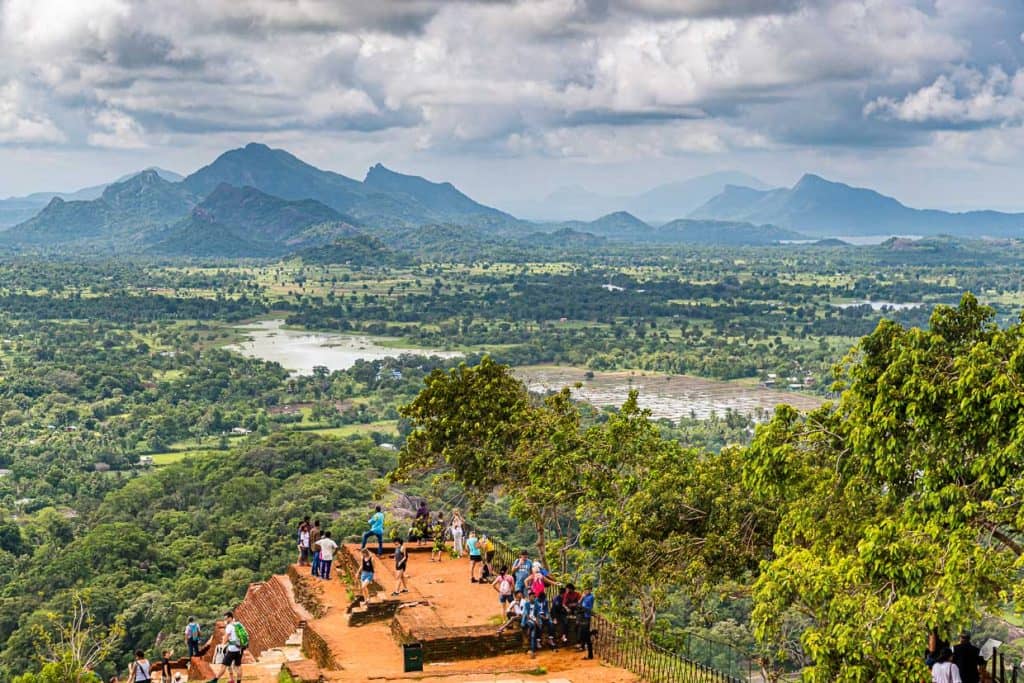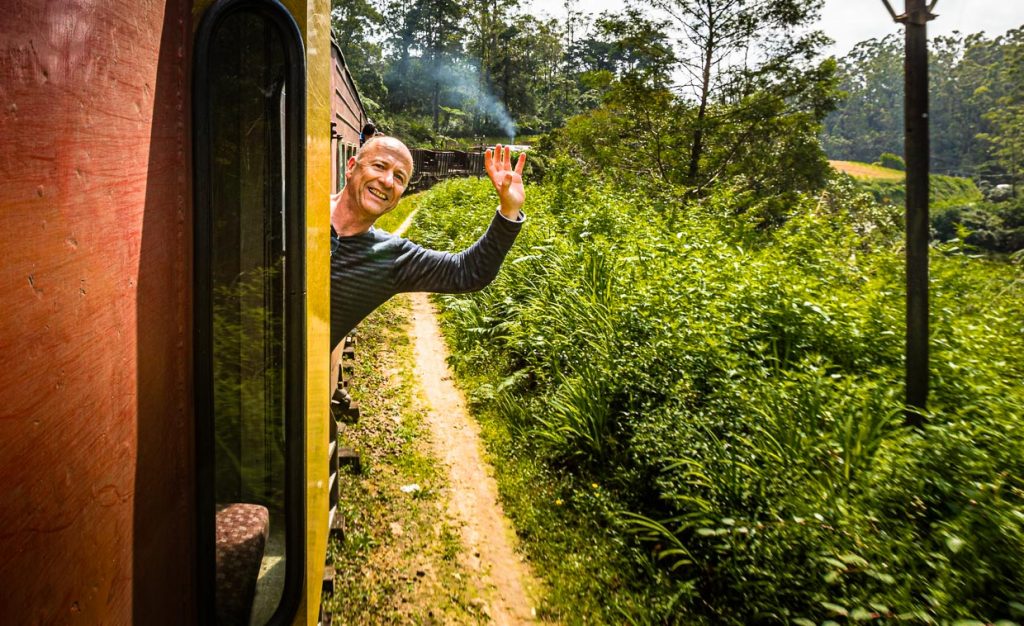Each of Sri Lanka’s many attractions deserves more time than most tour operators allow for it on their round trips. But tourism has also come to a near standstill due to the world situation. Russian and Ukrainian tourists have made up the bulk of visitors to the country and have also been major consumers of Sri Lanka’s tea exports. However, especially the people of Sri Lanka with their warmth deserve to keep the country on the list of the most interesting countries.
Sri Lanka is a beautiful country and in 2019 it was top of the popularity scale of the internationally known travel guide publisher Lonely Planet. Today, it is going through a crisis as the respective political leaderships of the past decades have brought the country into increasing dependency on rival powers China and India. National bankruptcy has not yet been averted.

After 25 years of civil war, which prevailed until 2009 mainly in the Tamil-populated north of the island, the two ethnic groups of Sinhalese and Tamils are for the most part on friendly terms. Buddhism and Hinduism are the two main religions, ahead of Christianity and Islam, and their temples provide many colorful accents in the charming landscape.

Above the town of Dambulla in the central highlands, after an easy hike, we are fascinated by the Buddhist cave temples carved into a granite rock. Numerous gilded sculptures and murals in the Kandy style can be found today in the caves, which have been used continuously as a monastery for over 2,000 years. It’s no wonder that UNESCO has included this impressive site in its World Heritage List.

In the monastery courtyard, an offshoot of the tree under which the founder of the religion Buddha is said to have had the decisive enlightenment 400 years before Christ is venerated. Apart from this religious origin, Buddhist practice differs from that in other countries such as Tibet or Thailand. Hira, our guide bubbles out many interesting stories in every corner of the temple. Unfortunately, due to time constraints, we are not able to relate them as it would be appropriate to Buddhist teachings and their patient pursuit of knowledge. For the same day, the wild elephants of Minneriya National Park are on the agenda.

The monsoon rains start on time in Sri Lanka
Sri Lanka has pleasant travel weather all year round. The weather changes rather in the course of each day and after a sunny morning rain in the late afternoon is welcome not only to the locals. After all, water is precious and has been collected for centuries in mostly man-made reservoirs.

As predicted, the pleasantly warm monsoon rains begin punctually at 3:30 p.m. as we board our safari vehicles at the entrance to Minneriya National Park. We drive alternately through thorny undergrowth or dense forests to where the wild elephants prefer to stay. As early as the 3rd century, the waters of the Amban River were dammed to form the Minneriya Reservoir, which covers almost 20 square kilometers.

Visitors do not stop the pachyderms from their wayward occupation. Apparently strolling, the elephants cover long distances, feed, take a bath in the Minneriya reservoir or a small watering hole and come quite close to the safari vehicles. The drivers of the four-wheel drive jeeps only have enormous respect for elephant cows with offspring. Even in the deepest mud, they must always be ready to go forward.
Sri Lanka’s imposing rock fortress Sigiriya
The next morning, the sun greets us again and we set off for the rock fortress of Sigiriya, a UNESCO World Heritage Site. The roads are narrow and more than 40 kilometers per hour are rarely achieved in Sri Lanka.

If one interprets the historical graffiti lying on top of the megaliths correctly, this is probably one of the world’s oldest tourist attractions. Before that, we first try to find out from a collection of signs what is forbidden or commanded on the site.

The path to the rock fortress on the 200-meter-high megalith leads through one of the oldest garden complexes in Asia. The extensive grounds were laid out in the 5th century under King Kasyapa. After killing his father, King Dhatusena, he was safe here for 2 decades from the revenge of the actual heir to the throne, his half-brother Moggallana.

Starting in the flat part with the water gardens, the path becomes steeper and steeper via the boulder and terrace gardens. After some time you reach a small intermediate plateau, from which between two lion’s paws carved into the rock, the narrow steep path leads up to the actual castle At the foot of the steep and impregnable lion’s rock stretches a garden landscape. Smaller boulders have been harmoniously embedded in lawns and water in their original place by the builders.


Once you have reached the highest point step by step on the narrow steep path in the stream of visitors, you are amazed at the vast expanse of the palace ruins. While looking at the wonderfully wide view in all directions, one can hardly believe that this fortress has been the capital of Sri Lanka for only two decades.

Buddha’s tooth in the temple of Kandy
The capital of the Central Province in the highlands of Sri Lanka is the country’s most important Buddhist pilgrimage site. Once a day, the upper floor of the large temple fills with believers who have made their way from all over the country to get a brief glimpse of the Buddha’s left canine tooth in Sri Lanka’s former capital.

An extremely slow drum rhythm reinforces in every corner of the temple the deep religious devotion of the faithful who have brought flowers and gifts for the monks.

The best Ceylon tea grows in the highlands of Sri Lanka
The cooler climate and several hours of fog every day allow a mild-aromatic tea of the best quality to flourish on the tea plantations of the central highlands. From 6 a.m. to 2 p.m. in the afternoon, the tea pickers are on the road. On their backs they carry a sack that holds 20 kg of the youngest light green leaves that have grown in the last two weeks. These can then be processed in the tea factory on the same day.

The fresh tea leaves must first wilt in the air for 24 hours before they are processed in several steps to produce different types of black tea.

After six weeks at the latest, the tea is sold at auction in the capital Colombo to the highest bidders from all over the world.

Journey on the world’s slowest express train
A breathtaking train ride begins at Nanu Oya station, taking us 60 kilometers through the mountains of Sri Lanka. Although seats were reserved in the panorama car, it did not keep me on the seat during the four-hour ride. It is too nice to sit on the floor in the open train door with a view of waterfalls and tea plantations during the ride.

Gentle tourism in harmony with agriculture

The Jetwing Kaduruketha Hotel in the agricultural hilly region south of the central highlands is a good example of the successful coexistence of tourism and local infrastructure.

Accompanied by our personal butler Prabath Madushanh and the hotel-employed environmentalist Ishanda Senevirattna, we set off on a two-hour bike tour through the surrounding area. Here, the environment is understood not only as nature, but above all as the social environment. We meet farmers with whom the preparation of the rice fields is discussed and learn how the hotel secures their economic existence. The food processed in the hotel is bought from the independent farmers in the nearest surroundings. In addition, in order not to be threatened in their existence by possible crop failures, they receive subsidies for their seeds every year.

Sustainability has many facets
Staying at the Jetwing Kaduruketha hotel complex gradually reveals how enjoyable sustainable living can be. Guest rooms are spread out across the expansive shaded grounds in separate bungalows. With windows closed only with wooden bars and insect screens, one has direct contact with nature. Without air conditioning you can enjoy the peace and scent of nature. Bicycles are at the free disposal of each guest.

Here, energy is saved without guests having to sacrifice amenities. Carefully planned air circulation makes air conditioning unnecessary. Hot water is generated from solar energy, and instead of incandescent bulbs, only LED lights shine. Garbage is separated and compost is used to produce the biogas used in the plant. In the kitchen, cooking is done on firewood, which is a byproduct of cinnamon production. Drinking water and personal hygiene products are available in reusable glass bottles.



An ornithological walk with an expert guide awakens the spirits before breakfast. The staff is from the local area and meets the guests unobtrusively in excellent English without leaving their own way of life. Small rituals like the Buddhist blessing of the tourist vehicle take place rather casually.

The research trip was supported by the Ministry of Tourism of Sri Lanka

